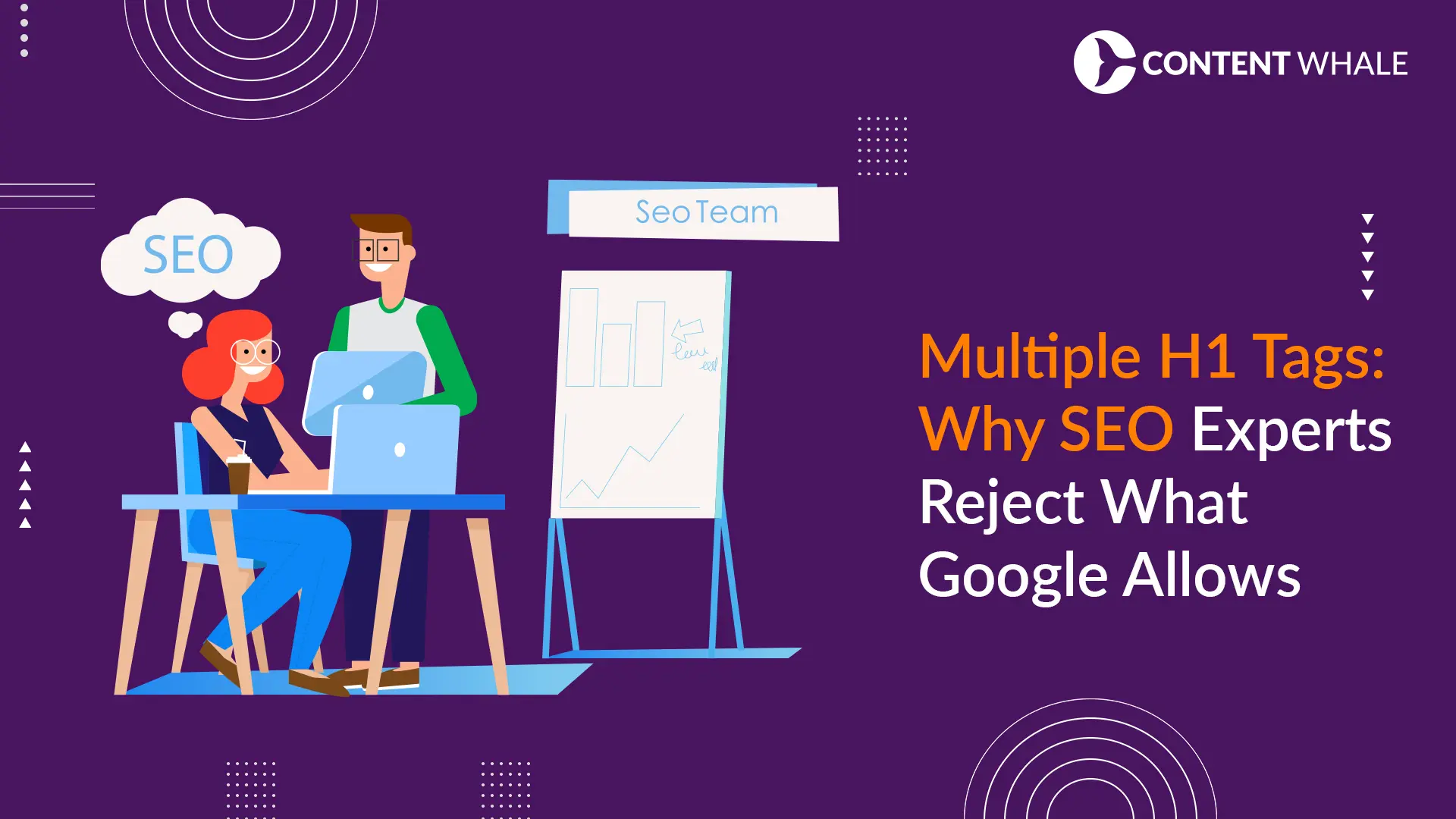Quick Summary
Explore three key content marketing trends for 2024: interactive and immersive content, personalization with AI-driven content, and sustainability-focused marketing. Learn how to incorporate these trends into your content strategy to stay ahead in the competitive world of digital marketing. Stay updated with emerging trends, leverage advanced technologies, engage authentically, and focus on providing real value to your audience. These strategies will help you create impactful digital content and drive your brand’s success.
The field of content marketing is changing rapidly, making it essential for marketers to stay informed about the latest content marketing trends. These trends significantly impact how brands connect with their audiences, craft messages, and deliver value. Understanding and implementing these marketing strategies is vital to remaining competitive in the digital space.
In 2024, keeping up with emerging trends is more important than ever. According to recent data, 85% of marketers believe that AI will significantly alter how content is created, with 63% expecting most content to involve AI to some extent. This reflects a broader shift towards integrating advanced technologies in digital content creation and online marketing strategies.
The purpose of this article is to equip you with the knowledge and content tips needed to enhance your content strategy. Whether you’re focusing on online marketing or looking to refine your content creation process, these trends will help you stay ahead.
Let’s dive into the marketing trends that will define 2024 and explore how they can be integrated into your digital marketing efforts. By understanding these content marketing innovations, you can better prepare for the future of content marketing and achieve greater success in your campaigns.
Trend 1: Interactive and Immersive Content

Interactive and immersive content, such as augmented reality (AR), virtual reality (VR), and 360-degree videos, is revolutionizing how brands engage with their audiences. These content marketing innovations create experiences that go beyond passive consumption, encouraging users to participate actively.
1. Explanation of Interactive and Immersive Content
Interactive content includes elements that require user participation, while immersive content envelops the user in a simulated environment. Technologies like AR and VR are at the forefront of this trend, offering unique and engaging ways to present digital content.
For instance, AR can overlay digital information on the real world through devices like smartphones, while VR provides a fully immersive experience using headsets.
2. Benefits of Engaging Audiences through Interactive Content
Using interactive and immersive content in your content strategy can significantly boost audience engagement and retention. This type of content allows users to interact with brands memorably, making them more likely to recall and engage with the brand in the future.
According to recent studies, 70% of marketers using interactive content report it as highly effective in converting leads.
3. Examples of Brands Successfully Using Interactive Content
Several brands have successfully implemented these marketing trends to enhance user experience. IKEA, for example, uses an AR app that allows customers to visualize how furniture would look in their homes.
Similarly, TOMS Shoes created a VR experience that transported viewers to Peru, showing the impact of their purchase on local communities. These examples highlight how content marketing trends can create a deeper connection with the audience.
4. Tips for Creating and Implementing Interactive Content in Your Strategy
I) Understand Your Audience: Tailor interactive experiences to your audience’s preferences and behaviors.
II) Focus on Storytelling: Create compelling narratives that are enhanced by interactivity.
III) Use High-Quality Visuals: Ensure your AR and VR content is visually appealing and glitch-free.
IV) Promote Engagement: Encourage users to share their experiences on social media.
Tools and Platforms for Developing Interactive Content
Several tools and platforms can help you create interactive and immersive content. For AR, tools like ARKit (for iOS) and ARCore (for Android) are popular choices. For VR content, platforms like Unity and Unreal Engine provide comprehensive solutions. Additionally, platforms like Adobe Captivate and Ceros offer user-friendly interfaces for creating interactive content without extensive technical knowledge.
Integrating interactive and immersive content into your digital marketing strategy can set your brand apart and offer your audience a unique and engaging experience.
As these content marketing trends continue to evolve, staying updated with the latest technologies and best practices will be key to maintaining a competitive edge.
Trend 2: Personalization and AI-Driven Content

Personalization and AI-driven content are reshaping the content marketing trends landscape. The ability to tailor digital content to individual user preferences enhances engagement and conversion rates. AI technologies are becoming integral in creating personalized experiences that resonate deeply with audiences.
1. The Growing Role of AI in Content Creation and Personalization
AI is playing an increasingly pivotal role in content creation and personalization. By analyzing vast amounts of data, AI can identify patterns and preferences, enabling marketers to deliver highly targeted content.
This trend is evident in the rising adoption of AI tools for tasks such as content generation, audience segmentation, and predictive analytics. For instance, AI can help create blog posts, social media updates, and email newsletters tailored to specific audience segments.
2. Benefits of Personalized Content for User Engagement and Retention
Personalized content significantly boosts user engagement and retention. When content is relevant to the user’s interests and needs, they are more likely to interact with it. Studies show that personalized emails have a 29% higher open rate and a 41% higher click-through rate than generic ones.
This increased engagement leads to better retention, as users feel more connected to the brand. Personalized experiences can also enhance customer loyalty and drive repeat business.
3. Examples of AI-Driven Content Marketing Strategies
Several brands are leveraging AI-driven content to great effect. Netflix, for instance, uses AI algorithms to recommend shows and movies based on viewing history, creating a highly personalized user experience. Similarly, Amazon employs AI to suggest products based on previous purchases and browsing behavior.
These examples illustrate how AI can be utilized to create tailored content that meets the specific needs of users, enhancing their overall experience.
4. Tips for Leveraging AI to Create Personalized Content Experiences
I) Utilize AI Tools: Implement AI tools such as HubSpot’s AI-powered content optimization or Grammarly for content enhancement.
II) Segment Your Audience: Use AI to analyze user data and segment your audience based on behavior, preferences, and demographics.
III) Create Dynamic Content: Develop dynamic content that can be automatically adjusted based on the user’s real-time interactions.
IV) Monitor and Adjust: Continuously monitor the performance of your personalized content and adjust strategies based on analytics.
Tools and Technologies for Implementing AI in Content Marketing
Several AI tools and technologies can help personalize your content strategy. For instance, tools like Persado and Copy.ai can assist in generating personalized content at scale. CRM platforms like Salesforce use AI to provide insights into customer behavior, enabling more effective segmentation and targeting. Additionally, AI-powered analytics tools can help measure the impact of your personalized content and optimize it for better performance.
Incorporating AI and personalization into your digital marketing efforts can significantly enhance the effectiveness of your campaigns. By staying abreast of these content marketing innovations, you can create more engaging and relevant content, positioning your brand for success in the future of content marketing.
Trend 3: Sustainability and Purpose-Driven Content

Sustainability and purpose-driven content are becoming essential elements in content marketing trends. As consumers increasingly prioritize brands that align with their values, integrating sustainability into your content strategy can set your brand apart and foster deeper connections with your audience.
1. Importance of Sustainability and Purpose-Driven Marketing in Today’s Market
Consumers today are more conscious about the impact of their choices on the environment and society. They expect brands to take a stand on social and environmental issues.
According to recent studies, 88% of consumers want brands to help them make a difference. This shift in consumer behavior underscores the importance of digital marketing that reflects a brand’s commitment to sustainability and ethical practices.
2. How Brands Can Integrate Sustainability into Their Content Strategy
Integrating sustainability into your content strategy involves more than just promoting eco-friendly products. It requires a holistic approach that includes transparency, ethical sourcing, and social responsibility. Here are some steps to consider:
I) Highlight Your Sustainability Efforts: Share stories about your brand’s sustainability initiatives, such as reducing carbon footprints, using recycled materials, or supporting fair trade practices.
II) Educate Your Audience: Create informative digital content that educates your audience about sustainability issues and how they can contribute.
III) Collaborate with Influencers: Partner with influencers who are passionate about sustainability to amplify your message.
IV) Engage in Social Causes: Align your brand with social causes that resonate with your audience, such as environmental conservation, social justice, or community development.
3. Examples of Purpose-Driven Content Campaigns
Several brands have successfully executed purpose-driven content campaigns that resonate with their audiences. Patagonia, for example, is well-known for its commitment to environmental sustainability. The brand’s “Don’t Buy This Jacket” campaign encouraged consumers to buy less and think more about their consumption habits, highlighting Patagonia’s commitment to reducing waste.
Another example is TOMS, which has integrated social good into its business model. Their “One for One” campaign, which donates a pair of shoes for every pair sold, has been highly effective in building a loyal customer base that values social responsibility.
4. Tips for Creating Authentic and Impactful Sustainability Content
I) Be Transparent: Honesty is key. Share both your successes and the challenges you face in your sustainability journey.
II) Tell Compelling Stories: Use storytelling to make your sustainability efforts relatable and engaging.
III) Use Visuals: Infographics, videos, and images can help illustrate your sustainability efforts effectively.
IV) Encourage Participation: Invite your audience to participate in your sustainability initiatives, whether through social media campaigns, events, or volunteering opportunities.
5. Benefits of Aligning Content with Social and Environmental Causes
Aligning your content with social and environmental causes can enhance your brand’s image and build stronger relationships with your audience. It helps in:
I) Building Trust: Transparency and ethical practices build trust with your audience.
II) Increasing Engagement: Purpose-driven content is more likely to be shared and discussed, increasing engagement.
III) Fostering Loyalty: Consumers are more likely to remain loyal to brands that align with their values.
IV) Driving Sales: Ethical and sustainable practices can influence purchasing decisions and drive sales.
As content marketing trends continue to evolve, integrating sustainability and purpose-driven initiatives into your content creation efforts can significantly impact your brand’s success. By aligning with the values and expectations of your audience, you can ensure a brighter and more sustainable future of content marketing.
Conclusion
Reflecting on the content marketing trends discussed, the industry is clearly set for exciting changes in 2024. The integration of interactive and immersive content, the growing reliance on AI-driven personalization, and the emphasis on sustainability and purpose-driven marketing are establishing new standards for digital marketing. By incorporating these marketing trends into your content strategy, you can create more engaging and impactful digital content.
Whether through innovative content creation techniques or aligning your brand with social causes, these strategies will help you stay ahead in the competitive world of online marketing. Stay updated with emerging trends, leverage AI and other technologies to enhance your content marketing innovations, engage authentically with your audience, and focus on providing real value that aligns with their interests and concerns.
As we move forward, the future of content marketing will continue to evolve, and by staying informed and agile, you’ll be well-equipped to harness these trends and drive your brand’s success.
FAQs
What is interactive content, and how can it benefit my marketing strategy?
Interactive content includes elements like AR, VR, and 360-degree videos that engage users by requiring their participation. This type of content can significantly boost engagement and retention, making your marketing strategy more effective.
How can AI be used to create personalized content?
AI analyzes user data to tailor content to individual preferences, enhancing engagement and conversion rates. Tools like AI-driven content optimization platforms can help create personalized user experiences.
Why is sustainability important in content marketing?
Sustainability resonates with consumers who value environmental and social responsibility. By integrating sustainability into your content strategy, you can attract a more conscious audience and build brand loyalty.
What are some examples of successful purpose-driven content campaigns?
Brands like Patagonia and TOMS have effectively used purpose-driven campaigns to promote sustainability and social responsibility. These campaigns highlight the brand’s commitment to important causes, enhancing its reputation and connecting with consumers.
How can I stay updated with the latest content marketing trends?
To stay informed about the latest trends, follow industry blogs, attend webinars and conferences, and engage with thought leaders on social media. Regularly updating your knowledge will help you adapt your strategy to evolving market dynamics.





